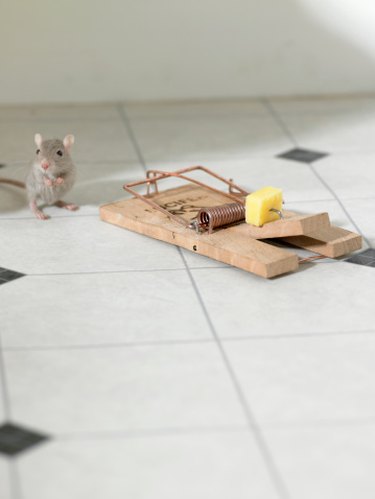Things You'll Need
Mouse traps
Cheese or seed
Rat poison

Mice are a common problem in many households and can quickly spread if the problem is not handled promptly. Mice often find haven in nooks and crannies of a home where they can find both shelter and a source of sustenance. Mice will often nest inside insulation for this purpose since the insulation gives them warmth and protects them against outside elements. Getting rid of mice nesting in the insulation requires diligence and the right materials.
Step 1
Clean the house to remove any crumbs or other debris that could be used as a food source. Pay particular attention to areas where the insulation is exposed since those are likely the places where mice will come in and out looking for food. Pet food or birdseed left outside also serve as a magnet for rodents.
Video of the Day
Step 2
Place mouse traps in crawlspaces, basements, attics and anywhere else where insulation is present.
Step 3
Load the traps with cheese or other food items. Wild mice are not generally picky about their food and will locate whatever you leave out.
Step 4
Place mouse poison into the insulation in areas where you know mice reside if you can do so without children or pets accessing those areas. There is a risk of a mouse consuming the poison and venturing somewhere you can't reach it before death, resulting in odor, but poison can help eliminate rodent populations if you don't want the expense of a professional extermination.
Tip
Seal off any holes in the insulation and in the home itself to prevent mice from repopulating.
Video of the Day